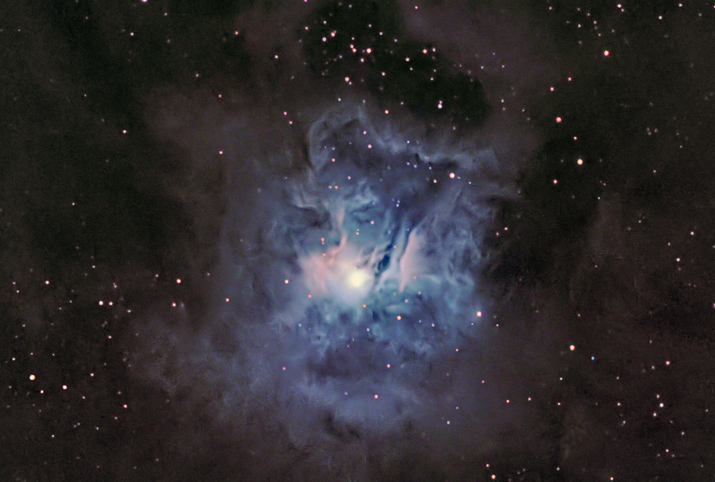
|
Date: 09/23/2011 - Location: Denton, Texas
|

|
Discovered in 1794 by William Herschel NGC 7023, also known as The Iris Nebula, is located approximately 1400 light years from the Earth in the constellation Cepheus. This beautiful nebula shines with the reflected light from the its bright central star. (Designated HD 200775) This is a relatively young pre-main sequence star that is approximately 10 times the mass of our Sun. The predominately blue color results from the central starís light being reflected from microscopic dust particles in a large cloud that surrounds the star. The bright portion of the nebula is about 6 light years across its long axis. This is only a small part of a much larger dust and gas cloud that stretches through out this part of space. As there is very interesting chemistry taking place within the nebula, NGC 7023 continues to be the object of much astronomical research . On either side of the central star, there are areas that shine with a pinkish glow. These areas are known as Photo-Dissociation Regions (PDRs). Studies of spectra data of these regions collected by the Spitzer Telescope indicate a composition of polycyclic aromatic hydrocarbons, fullerenes and even diamonds.
|